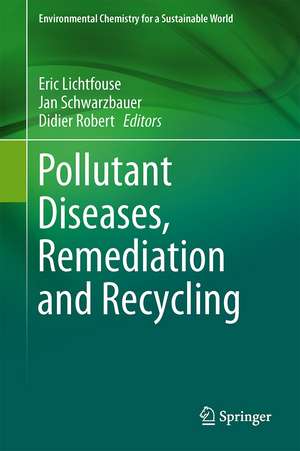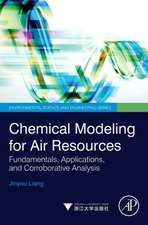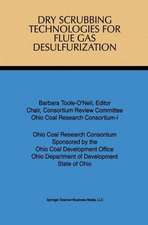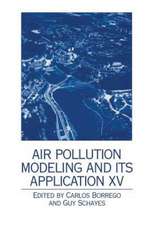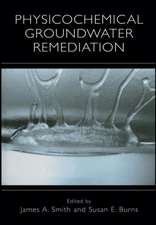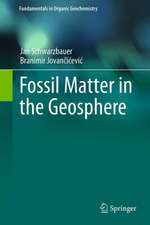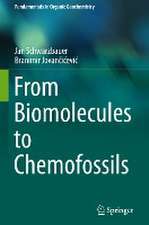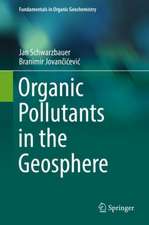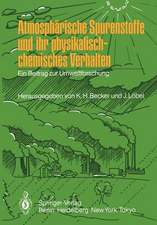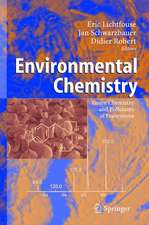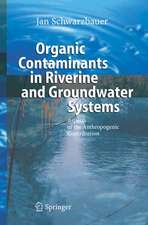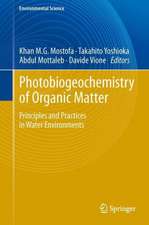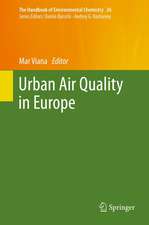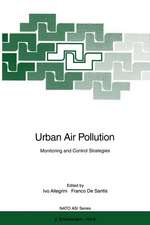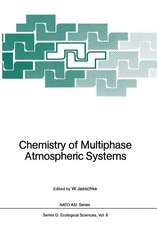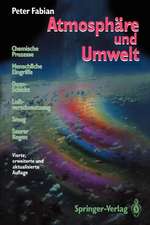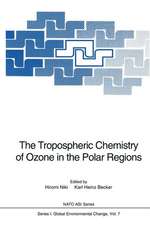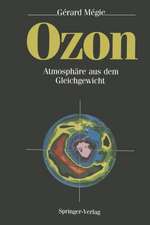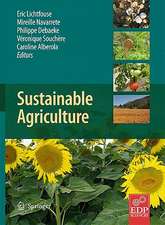Pollutant Diseases, Remediation and Recycling: Environmental Chemistry for a Sustainable World, cartea 4
Editat de Eric Lichtfouse, Jan Schwarzbauer, Didier Roberten Limba Engleză Hardback – 4 feb 2014
Din seria Environmental Chemistry for a Sustainable World
- 18%
 Preț: 1118.45 lei
Preț: 1118.45 lei - 15%
 Preț: 645.79 lei
Preț: 645.79 lei - 15%
 Preț: 653.14 lei
Preț: 653.14 lei - 15%
 Preț: 648.24 lei
Preț: 648.24 lei - 15%
 Preț: 643.34 lei
Preț: 643.34 lei - 15%
 Preț: 651.51 lei
Preț: 651.51 lei - 15%
 Preț: 646.62 lei
Preț: 646.62 lei - 18%
 Preț: 956.81 lei
Preț: 956.81 lei - 18%
 Preț: 959.98 lei
Preț: 959.98 lei - 15%
 Preț: 646.62 lei
Preț: 646.62 lei - 18%
 Preț: 1389.30 lei
Preț: 1389.30 lei - 18%
 Preț: 1229.10 lei
Preț: 1229.10 lei - 18%
 Preț: 1001.81 lei
Preț: 1001.81 lei - 18%
 Preț: 1118.62 lei
Preț: 1118.62 lei - 18%
 Preț: 899.21 lei
Preț: 899.21 lei - 18%
 Preț: 1120.18 lei
Preț: 1120.18 lei - 18%
 Preț: 896.08 lei
Preț: 896.08 lei - 18%
 Preț: 788.72 lei
Preț: 788.72 lei - 18%
 Preț: 1009.70 lei
Preț: 1009.70 lei - 15%
 Preț: 650.86 lei
Preț: 650.86 lei - 15%
 Preț: 646.62 lei
Preț: 646.62 lei - 18%
 Preț: 1017.62 lei
Preț: 1017.62 lei - 18%
 Preț: 1118.62 lei
Preț: 1118.62 lei - 15%
 Preț: 644.95 lei
Preț: 644.95 lei - 5%
 Preț: 915.58 lei
Preț: 915.58 lei - 24%
 Preț: 751.40 lei
Preț: 751.40 lei - 18%
 Preț: 1008.12 lei
Preț: 1008.12 lei - 18%
 Preț: 1113.89 lei
Preț: 1113.89 lei - 18%
 Preț: 950.52 lei
Preț: 950.52 lei - 18%
 Preț: 959.98 lei
Preț: 959.98 lei - 15%
 Preț: 648.42 lei
Preț: 648.42 lei - 18%
 Preț: 950.96 lei
Preț: 950.96 lei - 23%
 Preț: 852.88 lei
Preț: 852.88 lei - 18%
 Preț: 959.50 lei
Preț: 959.50 lei - 20%
 Preț: 647.13 lei
Preț: 647.13 lei - 24%
 Preț: 744.58 lei
Preț: 744.58 lei - 18%
 Preț: 1215.22 lei
Preț: 1215.22 lei - 20%
 Preț: 570.17 lei
Preț: 570.17 lei - 24%
 Preț: 824.15 lei
Preț: 824.15 lei - 15%
 Preț: 647.59 lei
Preț: 647.59 lei
Preț: 971.81 lei
Preț vechi: 1185.14 lei
-18% Nou
Puncte Express: 1458
Preț estimativ în valută:
185.95€ • 194.17$ • 153.55£
185.95€ • 194.17$ • 153.55£
Carte tipărită la comandă
Livrare economică 15-29 aprilie
Preluare comenzi: 021 569.72.76
Specificații
ISBN-13: 9783319023861
ISBN-10: 3319023861
Pagini: 534
Ilustrații: XII, 545 p. 122 illus., 69 illus. in color.
Dimensiuni: 155 x 235 x 27 mm
Greutate: 1.2 kg
Ediția:2013
Editura: Springer International Publishing
Colecția Springer
Seria Environmental Chemistry for a Sustainable World
Locul publicării:Cham, Switzerland
ISBN-10: 3319023861
Pagini: 534
Ilustrații: XII, 545 p. 122 illus., 69 illus. in color.
Dimensiuni: 155 x 235 x 27 mm
Greutate: 1.2 kg
Ediția:2013
Editura: Springer International Publishing
Colecția Springer
Seria Environmental Chemistry for a Sustainable World
Locul publicării:Cham, Switzerland
Public țintă
ResearchCuprins
1. School air quality: pollutants, monitoring and toxicity.- 2. Organic contaminants from industrial wastewaters: identification, toxicity and fate in the environment.- 3. Fly ash pollutants, treatment and recycling.- 4. Organotin compounds from snails to humans.- 5. Surfactants: chemistry, toxicity and remediation.- 6. Cadmium, lead, thallium: occurrence, neurotoxicity and histopathological changes of the nervous system.- 7. Lead, arsenic, cadmium, mercury: occurrence, toxicity and diseases.- 8. Plants as monitors of lead air pollution.- 9. Carcinogenic nitrosamines: remediation by zeolites.- 10. Dioxins and furans: sources, impacts and remediation.
Notă biografică
Dr. Eric Lichtfouse is Editor of scholarly journals and series in environmental chemistry and agriculture. He is heading publication assistance services and teaching scientific writing in Europe and the USA. He has done research in organic geochemistry, soil carbon dynamics and phytoremediation. Dr. Jan Schwarzbauer is Editor of the journal 'Environmental Earth Sciences' and Subject Editor of 'Journal of Soils and Sediments'. After studying chemistry at the University of Hamburg, he is working since 1998 at the RWTH Aachen University leading as full professor the group 'Environmental Organic Geochemistry'. Dr. Didier Robert is professor in organic chemistry and green chemistry at the University Paul Verlaine-Metz (France). He is associate editor of the Journal of Photocatalysis Sciences and its research activities are devoted to the decontamination of air and water by photochemical processes, especially by photocatalysis. He is also editor of the biannual magazine "UniversCity" published by UPV-Metz, dedicated to Cultures and Sciences.
Caracteristici
Features chapters on artificial toxic substances in the environment In particular includes readings on indoor air pollution and health related issues Looks at pollutants from industrial wastewater from, amongst others, textile and petrochemical plants Explains how fly ash can be recycled in for instance agriculture and includes techniques to remediate carcinogenic nitrosamines Includes supplementary material: sn.pub/extras
